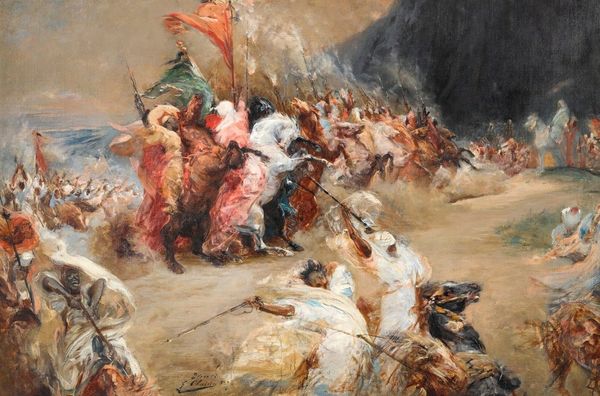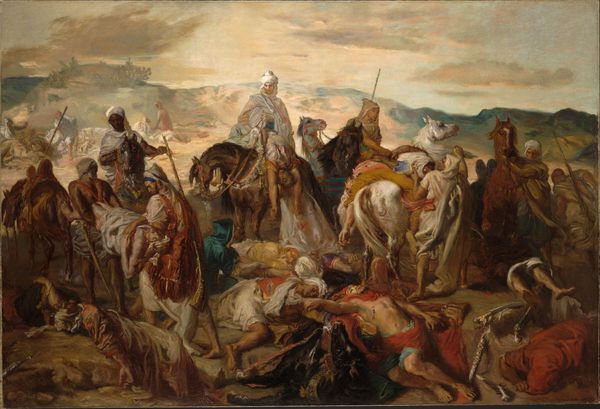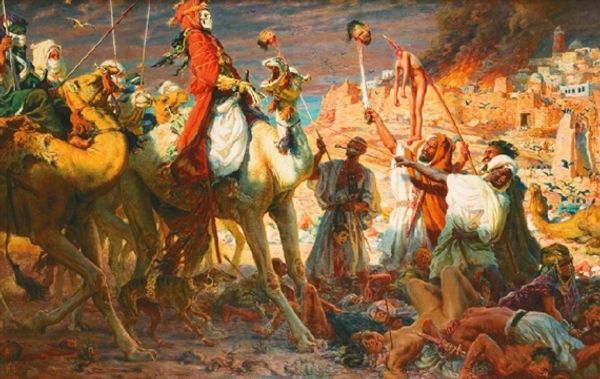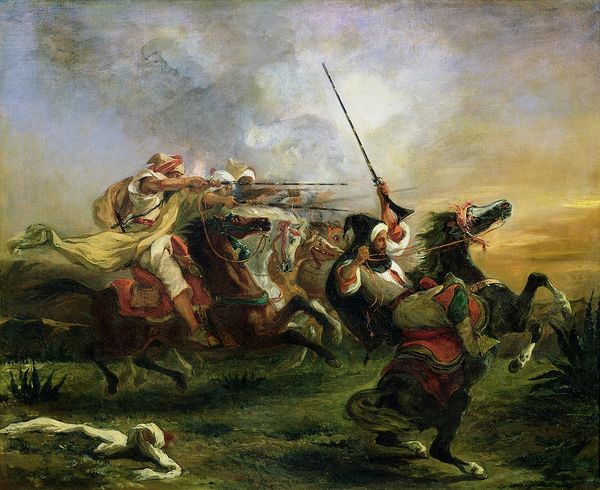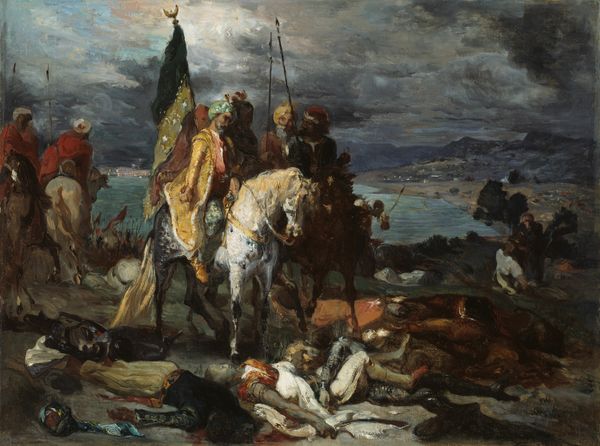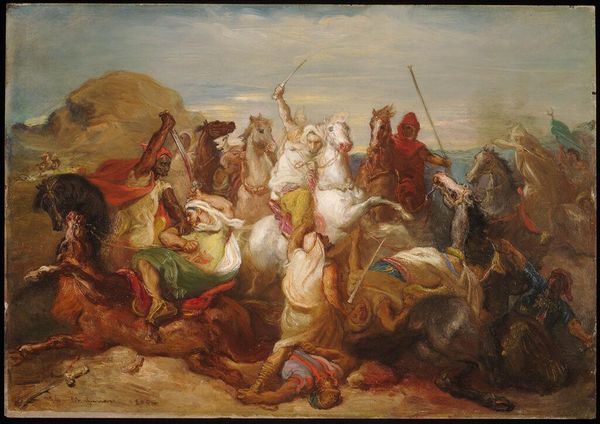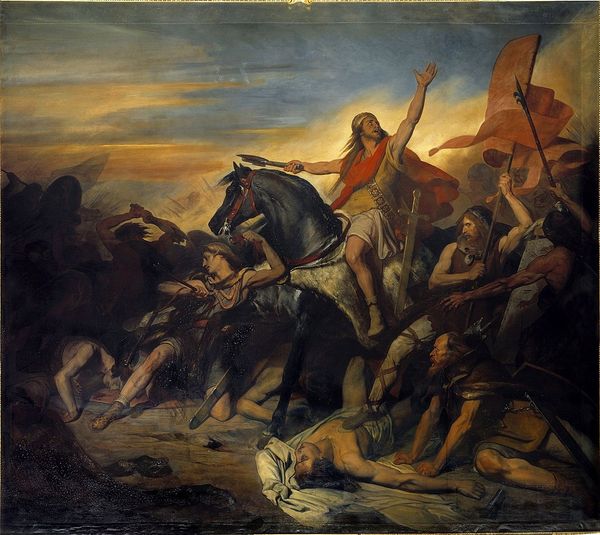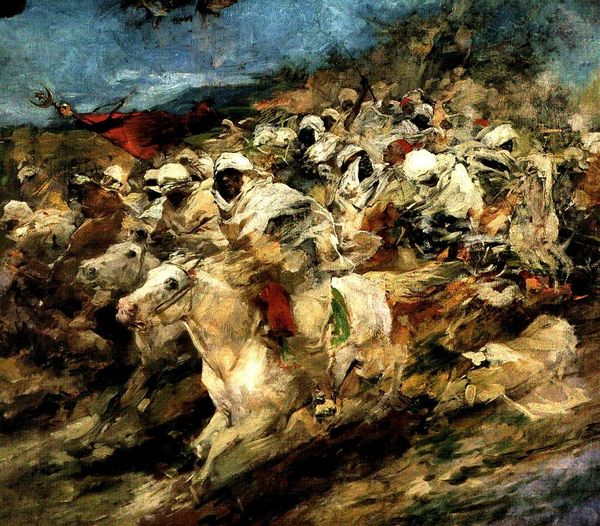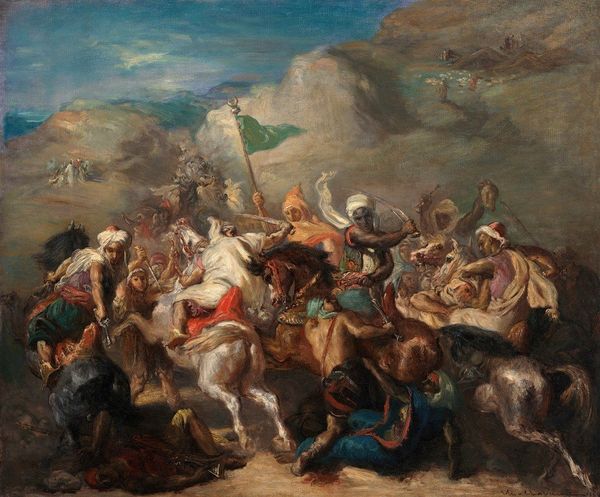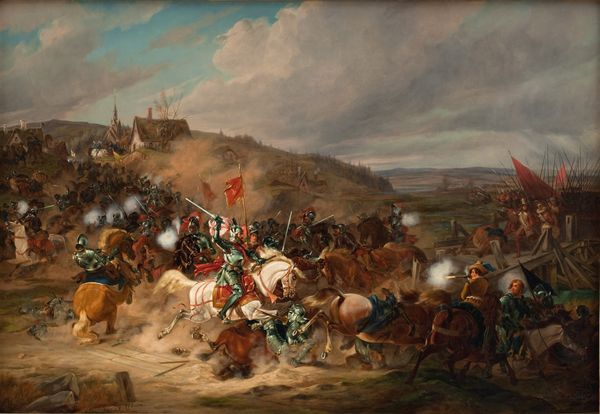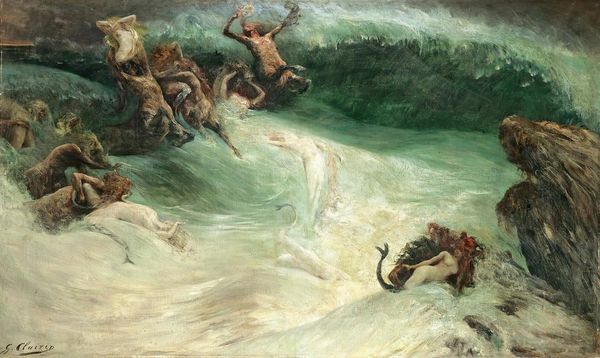
painting, oil-paint
#
narrative-art
#
painting
#
oil-paint
#
oil painting
#
orientalism
#
history-painting
#
academic-art
#
realism
Copyright: Public Domain: Artvee
Curator: Here we have Frederick Arthur Bridgman's "Pharaoh and His Army Engulfed by the Red Sea," an oil painting created around 1900. Editor: What a chaotic scene! My first impression is of utter devastation. You can almost feel the churning water and the desperate struggle against the overwhelming power of nature. Curator: Indeed. The painting captures a pivotal scene from the Book of Exodus. Bridgman, working in the style of Orientalism and Academic Art, has chosen to depict the moment of divine intervention when the Red Sea collapses upon Pharaoh's pursuing army. Note how he meticulously renders the soldiers, their chariots, and their horses in the throes of drowning. The composition uses the symbolism of water as both a pathway and a destroyer, reflecting themes of liberation and divine retribution. Editor: Right, the materials speak to that grand ambition, that need to depict such a monumental, morally weighty moment. What kind of pigment would give that stormy depth, that sense of overwhelming movement in the water? And think about the labor – Bridgman meticulously constructing the composition, layering paint, and conveying texture and form in such a scene. Curator: Water has always been a deeply complex symbol in cultural memory. This specific depiction has a lineage stretching back centuries, continually reinvented in art, literature, and folklore. Here, Bridgman reinforces the image of the all-powerful God intervening directly in human affairs, using the visual language of the time to convey religious and historical meaning. Editor: Absolutely. And, looking at the social context of Bridgman’s creation, we see a 19th-century fascination with the Orient that often overlooked the realities of colonialism and class structure, but it would be fascinating to know what specific source imagery was referenced. The texture makes you almost feel the water but who were these works meant to resonate with in this way and to what ends? Curator: That intersection between historical narrative, cultural interpretation, and material execution makes Bridgman’s work so compelling. Thank you for sharing these perspectives. Editor: Thank you. It enriches how we understand art, seeing how the symbols, and even the way the paint is layered, speak volumes.
Comments
No comments
Be the first to comment and join the conversation on the ultimate creative platform.
